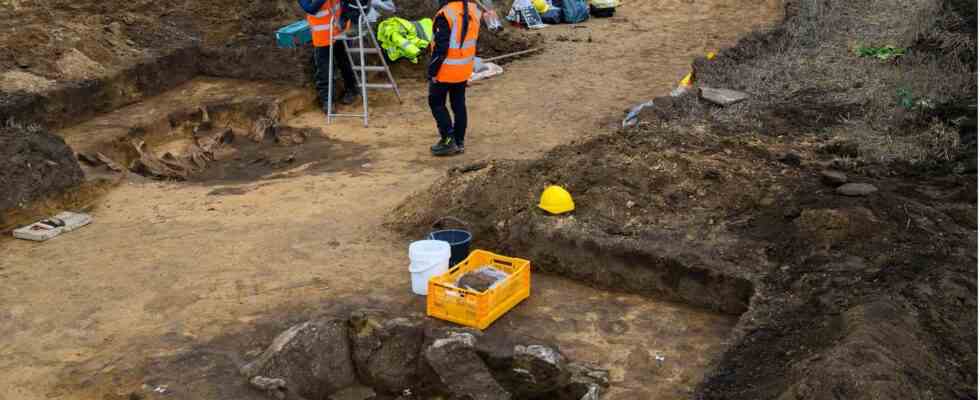archeology
Saxony-Anhalt: 4800-year-old grave found near Halberstadt
The archaeologists found four cattle next to the stone box grave, which apparently served as sacrificial offerings
© Klaus-Dietmar Gabbert / Picture Alliance
Near Halberstadt in Saxony-Anhalt, scientists have discovered a nearly 4,800-year-old grave. It is said to have belonged to a high-ranking person and to come from the so-called spherical amphora culture.
Archaeologists have made an extraordinary find near Halberstadt in Saxony-Anhalt: an almost 4,800-year-old grave was discovered during excavations in an industrial area. This is reported, among other things, by the MDR.
As the archaeologist and project manager Susanne Friederich explained, the so-called stone box grave belonged to a high-ranking person from the epoch of the spherical amphora culture. The origin of this culture was in Poland and extended to Lower Saxony. The culture is named after the correspondingly shaped stone vessels of this time.
The scientists also found a spherical amphora and a stone ax in the grave that has now been discovered. As Friederich explained, this was special in that the ax was made of flint. It looks as if it had never been used and had been sharpened especially for the burial. The grave is about 55 centimeters deep, 80 to 90 centimeters wide and 1.70 meters long.
Archaeology: Scientists find four cattle next to the tomb
Next to the grave, the archaeologists also found four cattle that had been added to the grave. The scientists therefore do not rule out that other cattle are buried. This is typical of the spherical amphora culture, since people in this era, at the end of the Stone Age, specialized in cattle and pig breeding.
archeology
300 coins in an amphora – the gold treasure of Como
The grave was discovered about 25 centimeters underground. It would be at the highest point of today’s commercial area, according to the MDR. According to Friederich, this also fits into the picture, since the dead were always buried at high altitudes. The archaeologist emphasized: “We are only at the beginning of the excavation, this grave was probably covered over.” The survey is also visible to the naked eye as a terrain mark in the landscape.
Source: MDR.deWith material from DPA

